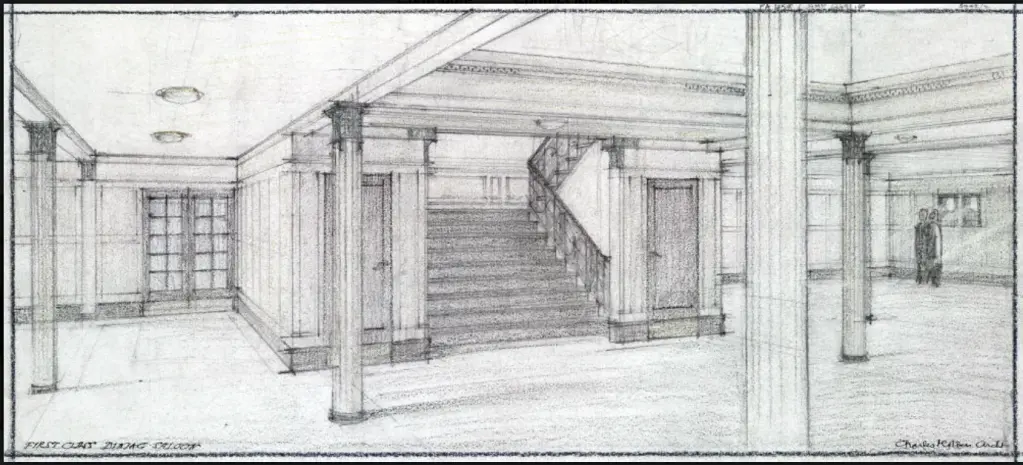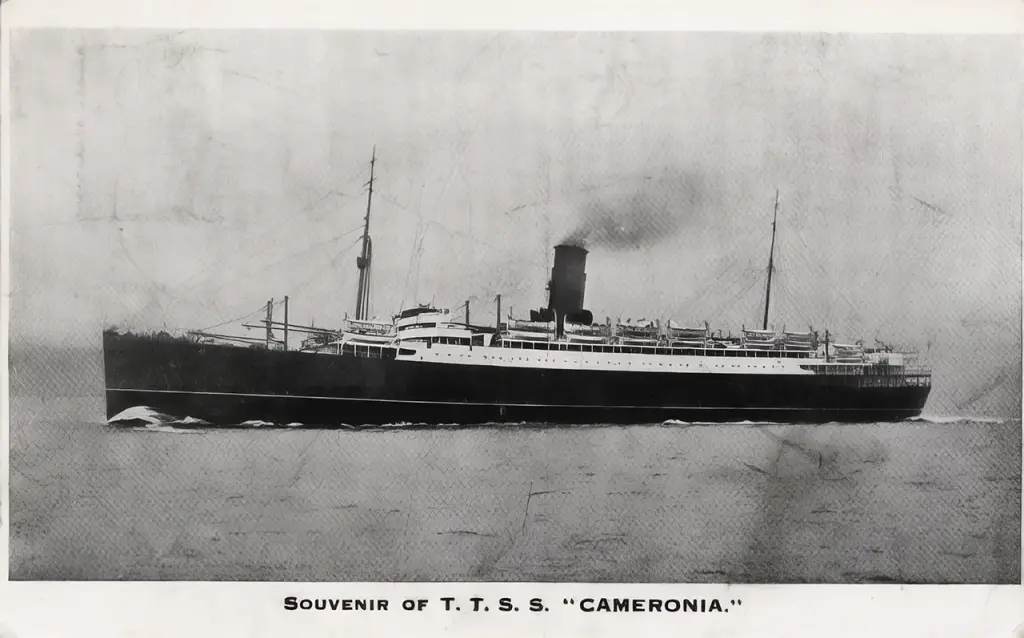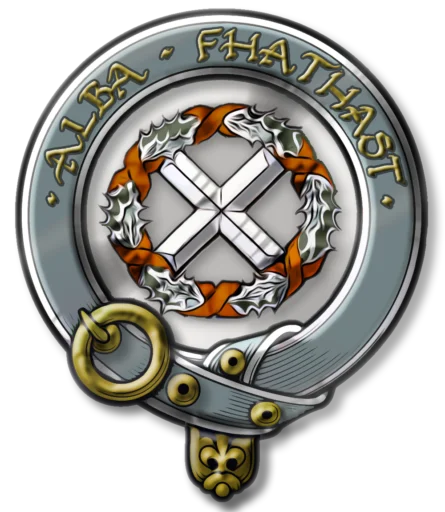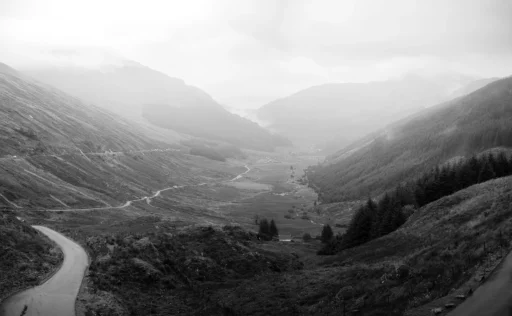While doing research about my Grandad I found myself falling down an intriguing rabbit hole about the TSS Cameronia which I think is an interesting glimpse into a very specific slice of life in Scotland during a narrow period of time. The TSS stands for Turbine Steam Ship, just in case anyone was wondering.
My Grandad visited the United States to attend a Seminary School for a year, and he went to and from Glasgow on the TSS Cameronia which, at that time was making round trips from Glasgow to New York with stops at Boston, and also Ireland. However, the Cameronia had a history both before and after this personal intersection. So what follows is a potted history of just one of the many Clyde built ships of this period.
Early Years
Built by, depending on which reference you believe, either William Beardmore and Co or William Denny and Co. I believe that William Beardmore and Co is correct as the the Cameronia had a sister ship, the Lancastria which is listed as being built by William Beardsmore and Co.

Owned by the Anchor Line, the SS Cameronia (the second ship to be have that name) launched in December 1919 weighing between 16,280 and 16,365 gross tonnes at a length of 552-575 feet, but not actually completed until September of the following year and her maiden voyage (to Liverpool and New York) was not until May of 1921, delayed as a result of strikes. Propelled by six steam turbines, she could sail at a rate of 16 knots (30km/h).
A luxury liner, the Cameronia had capacity for 265 1st class passengers, 370 2nd class passengers and 1,100 3rd class passengers. The ship had some eventful early years that included:
- Rescuing the crew of a US Coast Guard cutter that had caught fire in October 1925
- Colliding with the Norwegian steamship Hauk in November of 1925
- Failure of her steering gear in January of 1926
- A near collision with the Samaria (reportedly as little as 6 feet apart) in August of 1926.
After this series of incidents, the Cameronia underwent two refits, the first in 1928 to address her tendency to pitch heavily and then in 1929 her accommodation was refitted so that she could take 290 cabin class, 431 tourist class and 698 3rd class passengers.
But that was just the beginning as in 1935 the Anchor LIne (which was a subsiduary of Cunard) went into liquidation and the assets were purchases by Anchor Line Ltd. (that’s not confusing at all) the same year. The Cameronia then served as a troop ship for a brief period in 1935 before being refitted once again in the spring of 1936 and returning to use as an ocean liner.
It would be in this period that my Grandad sailed on her to New York, presumably blissfully unaware of all the drama that had preceeded.
World War II
When war was declared in September 1939, the Cameronia was at sea heading to New York. During that trip she rescued survivors from the Athenia (another passenger liner, and the first British ship to be sunk by Germany in the War) and was in fact the first British Ship to enter New York after war had been declared. She then made eleven unescorted round trips from Glasgow – New York before being requisitioned as a troop ship in December of 1940.
As a troop ship she travelled to amongst other places: Freetown, Sierra Leone; the Suez Canal; Alexandria, Egypt; Cape Town; South Africa; Mobasa Kenya; Bombay, India and Sphakia, Crete (where alongside the Glengyle they evacuated 6,000 Argyll and Sutherland Highlanders between 29 and 30 May 1941).

If that isn’t enough the Cameronia then served as an Infantry Landingship taking part in the invasion of French North Africa in November 1942 and in December of the same year was hit by a torpedo off the coast of Algiers, Algeria, blowing a 288 square foot hole in her side. Despite this she was able to make port in Bougie from where she was escorted to Gibraltar for temporary repairs and then returned to Glasgow for permanent repairs. She returned to service in June of 1943 and in June 1944 was the largest troopship to participate in Operation Overlord (the Battle of Normandy)
After the War
The Cameronia continued as a troop ship for a period after the war before being refitted in 1948 and given accomodation for 1,266 passengers (just a single class). She was then used to transport people who were emigrating to Australia. She was then sold to the Ministry of Transport in 1953 and renamed Empire Clyde, although still operate by Anchor Line. She served until 22 October 1957 when she was finally scrapped at Newport, Monmouthshire.
Sources
- https://greatships.net/cameronia2
- https://en.wikipedia.org/wiki/RMS_Cameronia
- https://www.norwayheritage.com/p_ship.asp?sh=came2
- https://web.archive.org/web/20060107214347/http://www.clydesite.co.uk/clydebuilt/viewship.asp?id=4622
- https://web.archive.org/web/20100413083257/http://www.theshipslist.com/ships/descriptions/ShipsC.html
Discover more from Alba Fhathast
Subscribe to get the latest posts sent to your email.



